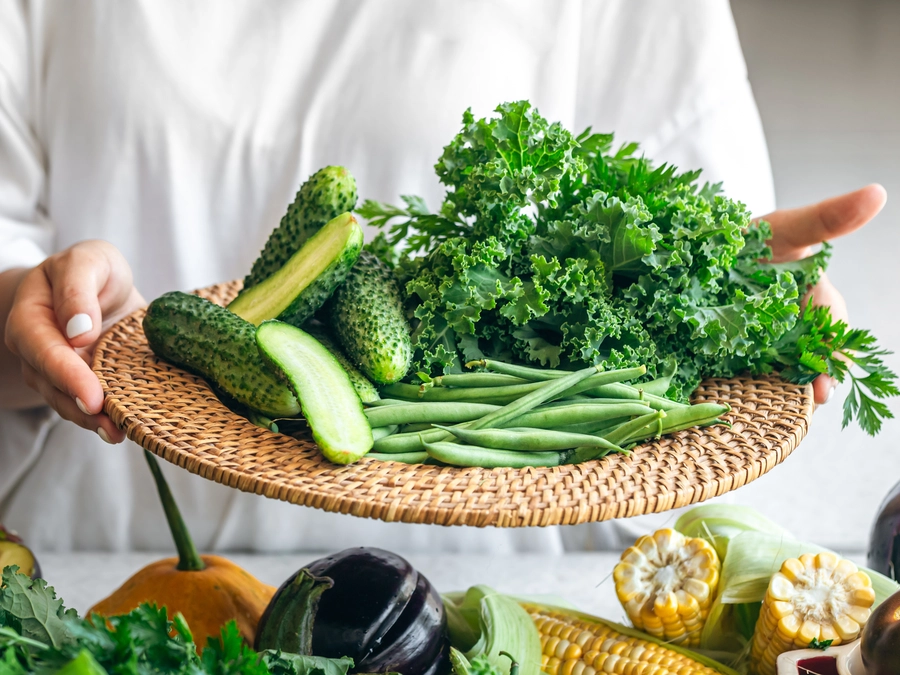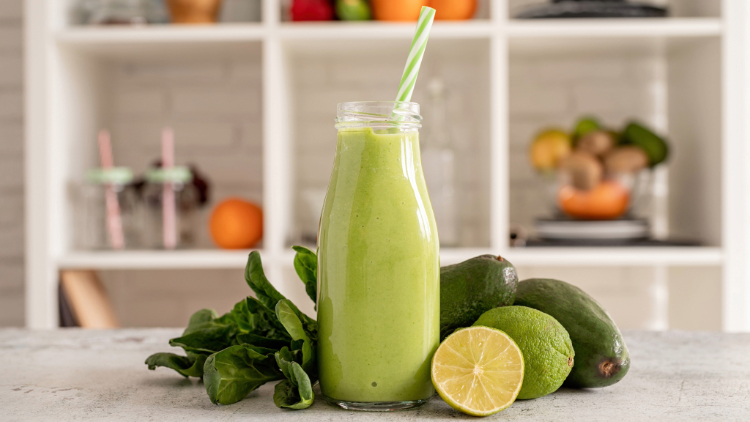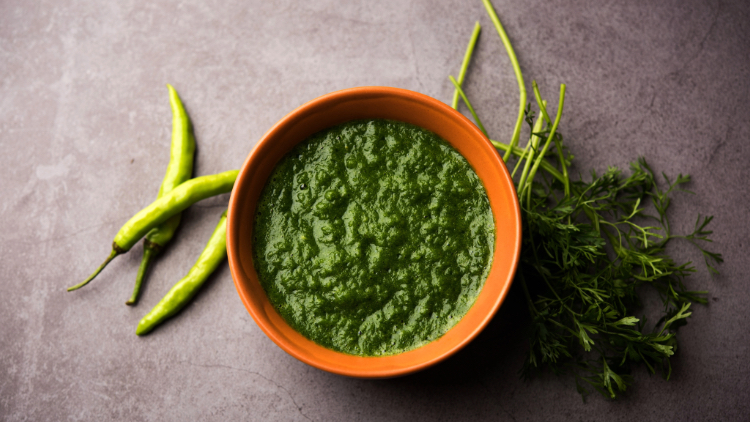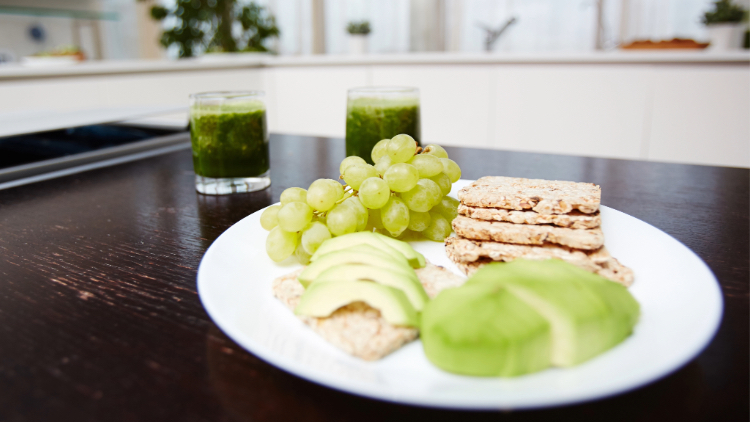Welcome



In a world increasingly aware of the benefits of a healthy diet, adding more greens to your daily meals is a delicious and smart choice. Not only do leafy greens and vibrant vegetables enhance your plates with color, but they also enrich your body with vital nutrients that boost energy and overall well-being. But let’s face it: sometimes, it can feel daunting to incorporate these nutritious powerhouses into your routine. Whether you’re a seasoned veggie enthusiast or someone unsure of where to start, we've got you covered. In this article, we’ll explore 10 easy ways to seamlessly add more greens to your diet, transforming your meals into vibrant, health-packed delights. From creative recipes to simple adjustments, our tips will help you savor both the taste and the benefits of greens, ensuring you enjoy every bite. Ready to make your plate greener? Let’s dive in and discover how to nourish your body and please your palate simultaneously!

Kickstarting your day with a green smoothie is one of the easiest and most delicious ways to increase your intake of leafy greens. Green smoothies are incredibly versatile and can be customized to suit your taste preferences and nutritional needs. By blending together greens like spinach, kale, or Swiss chard with fruits such as bananas, berries, or mangoes, you can create a nutrient-dense breakfast that is both satisfying and energizing. Adding a handful of greens to your smoothie not only boosts its vitamin and mineral content but also adds a refreshing and vibrant color that can make your morning routine more enjoyable.
One of the best things about green smoothies is their simplicity. All you need is a blender, some fresh or frozen greens, your favorite fruits, and a liquid base like water, almond milk, or coconut water. For an extra boost of protein and creaminess, you can also add a scoop of Greek yogurt or a plant-based protein powder. To enhance the flavor and nutritional profile, consider adding ingredients like chia seeds, flaxseeds, or a spoonful of nut butter. With so many possible combinations, you can experiment with different flavors and textures to find the perfect green smoothie for you.
Incorporating green smoothies into your daily routine can also help you stay hydrated and support your overall health. Leafy greens are rich in antioxidants, vitamins A, C, and K, as well as essential minerals like iron, calcium, and magnesium. By consuming these nutrients first thing in the morning, you set a healthy tone for the rest of your day. Additionally, the fiber content in greens and fruits can aid digestion and keep you feeling full longer, reducing the temptation to reach for unhealthy snacks. So blend up a green smoothie and enjoy a refreshing, nutrient-packed start to your day!
Eggs are a breakfast staple for many, and they provide a fantastic opportunity to incorporate more greens into your diet. By adding finely chopped spinach, kale, or arugula to your scrambled eggs or omelets, you can effortlessly boost the nutritional value of your meal without compromising on taste. Greens blend seamlessly with eggs, adding a subtle flavor and a vibrant pop of color that can make your breakfast both healthier and more visually appealing.
To create a delicious green-infused omelet, start by sautéing a handful of greens in a bit of olive oil or butter until they wilt and become tender. You can also add other vegetables like bell peppers, onions, or mushrooms to enhance the flavor and texture. Once the greens are cooked, pour beaten eggs over them and cook until set. For extra flavor, consider adding a sprinkle of cheese, herbs, or spices. The result is a nutrient-rich breakfast that is packed with protein, vitamins, and minerals, and will keep you energized throughout the morning.
If you prefer scrambled eggs, simply stir in your greens of choice as the eggs begin to set in the pan. The heat from the eggs will cook the greens quickly, making this a convenient and quick way to incorporate more vegetables into your breakfast. Not only do greens add valuable nutrients like folate, iron, and antioxidants, but they also provide fiber, which can help regulate your digestion and keep you feeling full and satisfied. By making this small adjustment to your breakfast routine, you can enjoy a more balanced and nutritious meal every morning.

Pasta is a beloved comfort food for many, and it can be easily upgraded to a healthier meal by incorporating a variety of greens. Whether you’re making a traditional spaghetti dish, a creamy Alfredo, or a hearty lasagna, adding greens like spinach, kale, or broccoli can elevate both the flavor and nutritional value of your pasta creations. Greens can blend seamlessly into sauces or be added as a topping, making it easy to enjoy a more balanced and nutrient-rich meal.
One simple way to incorporate greens into your pasta is to stir them into your sauce. For example, you can add a handful of fresh spinach or chopped kale to a tomato-based marinara sauce or a creamy Alfredo sauce. The greens will wilt and blend into the sauce as it simmers, adding a boost of vitamins and minerals without overpowering the dish. You can also toss cooked pasta with a pesto made from basil, spinach, or arugula for a vibrant and flavorful meal.
Another option is to use greens as a topping for your pasta. Lightly sautéed vegetables like spinach, Swiss chard, or broccolini can be added to your pasta just before serving, providing a fresh and colorful contrast to the rich flavors of the sauce. You can also create a pasta salad by tossing cooked pasta with a variety of fresh or blanched greens, cherry tomatoes, olives, and a light vinaigrette. This makes for a refreshing and nutritious meal that is perfect for lunch or dinner.
Salads are a fantastic way to incorporate a wide variety of greens into your diet, but they don’t have to be boring or repetitive. By getting creative with your ingredients and dressings, you can make salads an exciting and enjoyable part of your daily meals. Start by exploring different types of greens beyond the usual lettuce, such as arugula, watercress, Swiss chard, or mustard greens. Each type of green has its own unique flavor and texture, adding variety and interest to your salads.
To build a more exciting salad, consider adding a mix of colorful vegetables, fruits, nuts, and seeds. Ingredients like cherry tomatoes, cucumbers, bell peppers, radishes, and carrots can add crunch and color, while fruits like berries, apple slices, or orange segments can provide a touch of sweetness. Nuts and seeds, such as almonds, walnuts, sunflower seeds, or pumpkin seeds, add a satisfying crunch and a boost of healthy fats and protein. Experimenting with different combinations of these ingredients can keep your salads fresh and interesting.
Another key to making salads more enjoyable is to experiment with homemade dressings. Store-bought dressings can be convenient, but they often contain added sugars and preservatives. By making your own dressings, you can control the ingredients and customize the flavors to your liking. Simple vinaigrettes made with olive oil, vinegar, and herbs, or creamy dressings made with Greek yogurt, avocado, or tahini, can elevate the taste of your salads and make them more enjoyable to eat. With these tips, you can turn salads into a delicious and nutrient-packed daily habit.

Soups and sauces are another versatile and delicious way to incorporate more greens into your diet. Whether you’re making a hearty vegetable soup, a creamy bisque, or a rich tomato sauce, adding greens can enhance both the flavor and nutritional content of your dishes. Greens like spinach, kale, collard greens, or watercress can be blended into soups and sauces, providing an easy and effective way to increase your intake of vitamins, minerals, and antioxidants.
For soups, you can add greens during the cooking process or blend them in at the end. For example, adding chopped kale or Swiss chard to a vegetable or chicken soup as it simmers allows the greens to soften and infuse the broth with their nutrients. Alternatively, you can blend fresh spinach or arugula into a creamy soup just before serving, adding a vibrant green color and a boost of vitamins without altering the flavor too much. Blending greens into soups is especially useful for picky eaters or children who may not enjoy eating whole vegetables.
When it comes to sauces, greens can be pureed and incorporated to create a nutrient-dense base. For a classic marinara or tomato sauce, try blending in a handful of spinach or kale for added vitamins and minerals. You can also make a green sauce by blending herbs like basil, parsley, or cilantro with greens and olive oil for a flavorful pesto or chimichurri. These green sauces can be used to dress pasta, grilled meats, or roasted vegetables, adding a fresh and healthful touch to your meals.
Using greens as wraps or toppers is a fun and creative way to add more vegetables to your meals. Leafy greens like lettuce, collard greens, or cabbage leaves can serve as a low-carb and nutrient-rich alternative to traditional wraps or tortillas. By using greens as the base for your wraps, you can reduce your intake of refined carbohydrates while increasing your consumption of vitamins, minerals, and fiber.
To make green wraps, simply use large, sturdy leaves like romaine lettuce, collard greens, or Napa cabbage. These leaves are strong enough to hold your fillings without falling apart, making them perfect for wraps or burritos. Fill your green wraps with a variety of ingredients, such as grilled chicken, turkey, tofu, hummus, avocado, and a mix of crunchy vegetables. You can also add a drizzle of your favorite dressing or sauce for extra flavor. These wraps are not only healthy but also portable and convenient for on-the-go meals.
Greens can also be used as toppers for a variety of dishes. Adding a handful of arugula, spinach, or microgreens to your sandwiches, burgers, or pizzas can provide a fresh and peppery flavor that complements other ingredients. You can also top your grain bowls, tacos, or stir-fries with a mix of greens for added color, texture, and nutrients. By incorporating greens in this way, you can enhance the taste and nutritional value of your meals with minimal effort.
For those who find it challenging to consume fresh greens regularly, greens powders can be a convenient and effective solution. Greens powders are made from a blend of dehydrated vegetables, fruits, and superfoods, providing a concentrated source of vitamins, minerals, and antioxidants. By stirring a scoop of greens powder into your favorite drinks, you can easily boost your daily intake of nutrients without having to prepare or cook fresh vegetables.
Greens powders can be added to a variety of beverages, including smoothies, juices, and even water. To make a nutrient-packed smoothie, blend your favorite fruits with a scoop of greens powder, some yogurt or plant-based milk, and a handful of ice. The powder will blend seamlessly into the drink, providing an extra dose of vitamins and minerals without altering the taste significantly. For a quick and easy option, simply mix greens powder with water or juice and shake well before drinking.
In addition to drinks, greens powders can also be incorporated into other recipes. You can add a scoop to your morning oatmeal, yogurt, or chia pudding for a nutritional boost. Some people even mix greens powder into their pancake or waffle batter for a healthy twist on breakfast classics. With so many versatile ways to use greens powders, you can easily find a method that works for your lifestyle and preferences, ensuring you get the benefits of greens even on the busiest days.

Preparing green-packed snacks ahead of time is a great way to ensure you always have healthy options on hand. By dedicating a bit of time each week to meal prep, you can make it easier to incorporate more greens into your diet and avoid reaching for less nutritious snacks. Having ready-to-eat green snacks available can help you stay on track with your health goals and make it more convenient to enjoy the benefits of leafy vegetables.
One simple and delicious green snack is veggie sticks with hummus or guacamole. Slice up a variety of vegetables, such as celery, cucumber, bell peppers, and broccoli, and store them in the fridge for easy access. Pair these crunchy veggies with a homemade or store-bought dip like hummus or guacamole for a satisfying and nutrient-rich snack. You can also prepare green-packed snack boxes by combining veggies with a handful of nuts, seeds, or cheese cubes for a balanced and convenient option.
Another great green snack is kale chips. To make these, simply tear kale leaves into bite-sized pieces, toss them with a bit of olive oil and your favorite seasonings, and bake them in the oven until crispy. Kale chips are a healthy and delicious alternative to traditional potato chips and can be stored in an airtight container for several days. Other green-packed snacks to consider include spinach and cheese muffins, cucumber and cream cheese bites, or green smoothie popsicles. By preparing these snacks ahead of time, you can make it easy and enjoyable to consume more greens throughout the day.
The way you cook and prepare greens can greatly impact their flavor, texture, and nutritional value. By using a variety of cooking techniques, you can enhance the taste and appeal of greens, making them more enjoyable to eat. Whether you prefer your greens raw, steamed, sautéed, or roasted, experimenting with different methods can help you discover new and delicious ways to incorporate them into your meals.
One popular cooking technique for greens is steaming. Steaming helps to retain the nutrients and vibrant color of greens while softening their texture. To steam greens, simply place them in a steamer basket over boiling water and cook for a few minutes until they are tender but still bright green. Steamed greens can be enjoyed on their own with a drizzle of olive oil and a sprinkle of salt, or added to dishes like grain bowls, stir-fries, or soups.
Sautéing is another great way to cook greens, as it can enhance their flavor and make them more palatable. Heat a bit of olive oil or butter in a pan, add your greens, and cook until they are wilted and tender. You can also add garlic, onions, or other aromatics to the pan for extra flavor. Sautéed greens can be served as a side dish, mixed into pasta or rice, or used as a topping for pizzas and sandwiches.
Roasting is a less common but delicious method for cooking greens. Tossing greens like kale or Brussels sprouts with a bit of oil and seasoning and then roasting them in the oven can create a crispy and flavorful dish. Roasted greens can be enjoyed as a snack, added to salads, or served as a side with your favorite protein. By experimenting with these cooking techniques, you can find new and enjoyable ways to include more greens in your diet.
In addition to fresh greens and greens powders, there are a variety of green supplements available that can help you meet your nutritional needs. These supplements come in various forms, including capsules, tablets, and powders, and are designed to provide a concentrated source of vitamins, minerals, and antioxidants. By incorporating green supplements into your daily routine, you can ensure you are getting the benefits of greens even if you don’t always have access to fresh vegetables.
One popular type of green supplement is spirulina, a blue-green algae that is rich in protein, vitamins, and minerals. Spirulina is available in powder or tablet form and can be added to smoothies, juices, or taken as a supplement. It is known for its high nutrient content and potential health benefits, including boosting energy levels, supporting immune function, and promoting detoxification.
Another common green supplement is chlorella, a type of freshwater algae that is packed with nutrients. Chlorella is available in tablets or powder form and is known for its detoxifying properties and ability to support healthy digestion. It is also a good source of chlorophyll, which can help to cleanse the body and support overall health.
In addition to spirulina and chlorella, there are many other green supplements available, such as wheatgrass, barley grass, and moringa. These supplements can be taken individually or as part of a greens blend, providing a convenient and effective way to boost your intake of essential nutrients. By exploring different green supplements, you can find the ones that best suit your needs and help you achieve your health goals.
In conclusion, incorporating more greens into your daily diet doesn’t have to be a daunting task. By using these 10 easy and creative methods, you can enjoy the benefits of leafy greens and vibrant vegetables in a variety of delicious and satisfying ways. From starting your day with a green smoothie to exploring green supplements, there are countless ways to make your meals more nutritious and enjoyable. So go ahead and start adding more greens to your diet today – your body and taste buds will thank you!